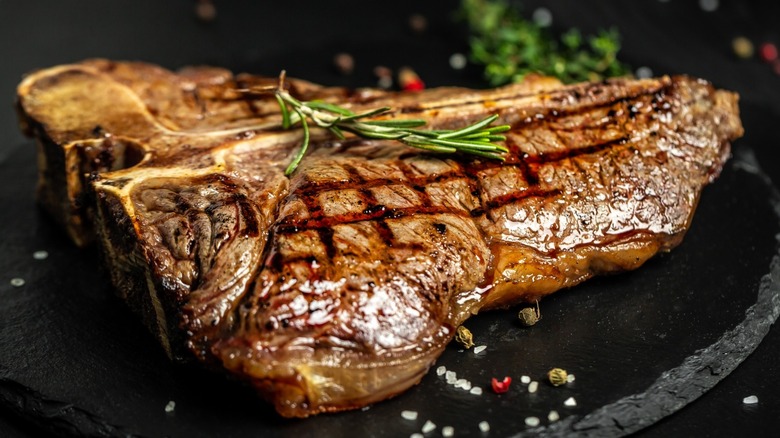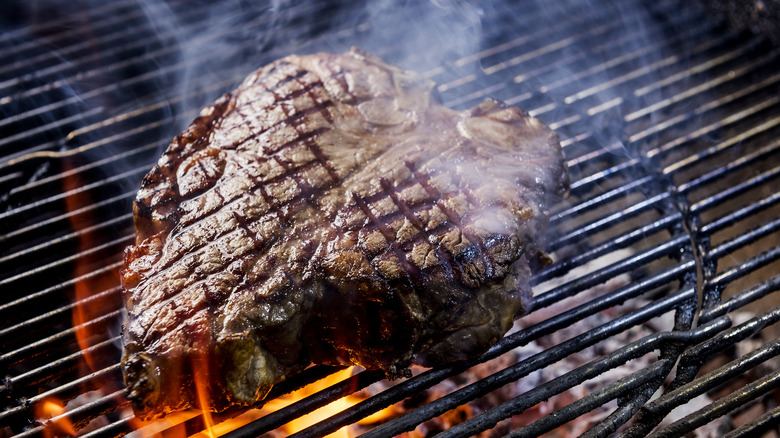How To Fix The Biggest Problem With Grilling T-Bone Steak
There's nothing like a thick, juicy T-bone, and what better way to cook such a steak than on the grill? Unlike tougher cuts of steak that are better suited to braising or more delicate ones that may be better when pan-seared, the T-bone is a steak that's almost perfectly suited to outdoor cooking.
Wait, what's up with that "almost?" Yep, you guessed it – a caveat is coming. (That "biggest problem" in the title probably tipped you off, as well.) Chicago Steak Company explains that a T-bone is actually a portmanteau steak of sorts, as the meat on each side of the bone is slightly different. One side's a tenderloin, while the other's a strip steak. If you were cooking these two steaks separately, the tenderloin would probably finish cooking more quickly than the strip side. But the bone helps keep the meat juicy (via Omaha Steaks). How, then, can you make sure that the two sides cook evenly without detaching them? Luckily, there is a way to fix this issue.
T-bones should be grilled via the 2-zone method
In order to grill T-bone steak, you'll need to employ what is known as a two-zone fire. This means that one side will be hotter, providing direct heat, while the other is slightly less hot as the heat is indirect. If you have a gas grill, you can achieve the first by turning on the burners for the direct heat side, while leaving them off on the other side. If you are grilling via the old-fashioned charcoal method, however, two zones are still doable. Simply pile up the charcoal briquets on one side, but leave the other side charcoal-free, per Lifehacker.
Okay, once you have your hot and not-so-hot grill zones set to go, how, then, should you position your T-bone? As Omaha Steaks advises, the strip steak should sit on the hot side, while the tenderloin (this is the smaller side of the T) needs to be farther away from the flame. If you manage to get your steak situated just right, both sides of the steak will reach perfection at the same time. Even if you don't pull off this balancing act, however, you'll likely wind up with a sizable steak that ranges from rare to medium, which is not such a terrible problem to have.

